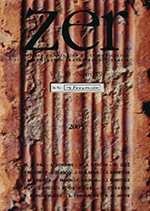Children in advertising: social representations of childhood in television advertisements
##plugins.themes.bootstrap3.article.main##
##plugins.themes.bootstrap3.article.sidebar##
Published
03-11-2011
Juan Miguel Gómez Espino
Juan Blanco López
Abstract
This article analyses the social representations of television advertising using a series of childhood archetypes. We set out from the hypothesis that the ensemble of representations that are produced around childhood and that can be extracted from TV advertising tends to pivot between two positive and negative extremes of evaluation. This dimension leads us to the evaluation of "childhood" as positive or negative depending on its adjustment to, or deviation from, the dominant values. Besides, we distinguish representations that tend to emphasise the more or less dependent character of the child as a subject requiring "control/protection" from those that insist on recognising an "autonomous" position for the child –especially as a rational consumer, or that emphase the child's "natural" aspect– as the incarnation of the virtues of nature projected onto the product. We propose a series of discourses that we denominate as follows: the discourse of the natural child, the discourse of the family child, the discourse of the problem child, the discourse of the vulnerable child and the discourse of the actor child.
How to Cite
Gómez Espino, J. M., & Blanco López, J. (2011). Children in advertising: social representations of childhood in television advertisements. ZER - Journal of Communication Studies, 10(19). https://doi.org/10.1387/zer.3840
##plugins.themes.bootstrap3.article.details##
Issue
Section
Articles
(c) UPV/EHU Press

